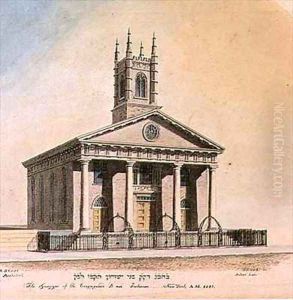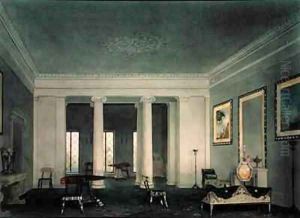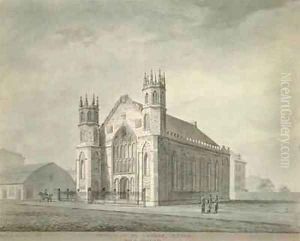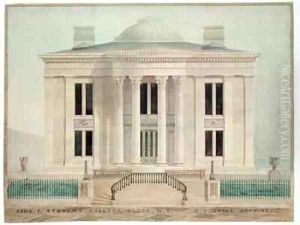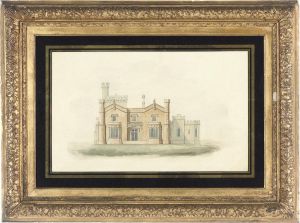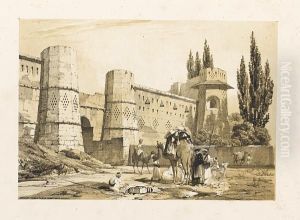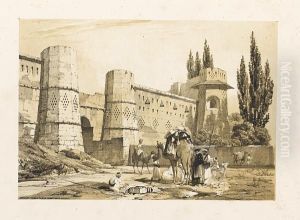Alexander Jackson Davis Paintings
Alexander Jackson Davis, born on July 24, 1803, in New York City, was a prominent American architect known for his major role in the introduction of Gothic Revival and Italianate styles in the United States during the 19th century. Davis was a versatile and imaginative designer whose work left a significant imprint on the landscape of American architecture.
Davis did not receive a formal education in architecture. He began his career as an apprentice in the New York City office of architect Ithiel Town in 1829. While working with Town, Davis gained practical experience that would prove invaluable. The partnership of Town and Davis produced significant works, including the design for the Indiana State Capitol in 1831.
By the mid-1830s, Davis had begun to establish himself as a solo practitioner. He became known for his residential designs, particularly country homes for wealthy clients. His extensive travels in Europe and his study of European architecture influenced his work significantly, and he was instrumental in popularizing the Gothic Revival style in the United States, adapting it to the American landscape and climate.
In 1837, Davis published 'Rural Residences', a book of his house designs that had a wide influence on American domestic architecture. His collaboration with landscape designer Andrew Jackson Downing led to the creation of picturesque landscapes that complemented his romantic architectural designs. Together, they co-authored 'A Treatise on the Theory and Practice of Landscape Gardening, Adapted to North America' in 1841, further cementing Davis's reputation.
Among his notable works is Lyndhurst in Tarrytown, New York, an exquisite example of Gothic Revival architecture. Davis also designed parts of the University of Michigan, the New York State Capitol in Albany, and numerous churches, public buildings, and homes across the country.
Davis's career declined as architectural tastes changed in the latter half of the 19th century, with a shift towards styles such as Second Empire and Beaux-Arts. Nevertheless, his influence persisted in the many homes and buildings that dotted the American landscape, reflecting his vision of a romantic, picturesque America.
Alexander Jackson Davis passed away on January 14, 1892, in West Orange, New Jersey. His legacy is preserved in the enduring beauty and historical significance of his architectural designs, which continue to be studied and admired for their creativity and their pivotal role in shaping American architectural identity.
